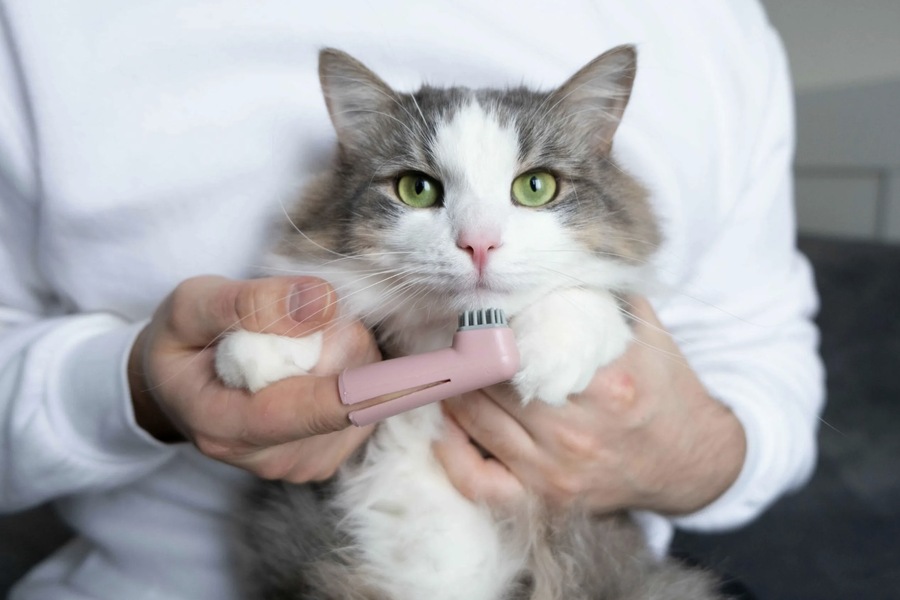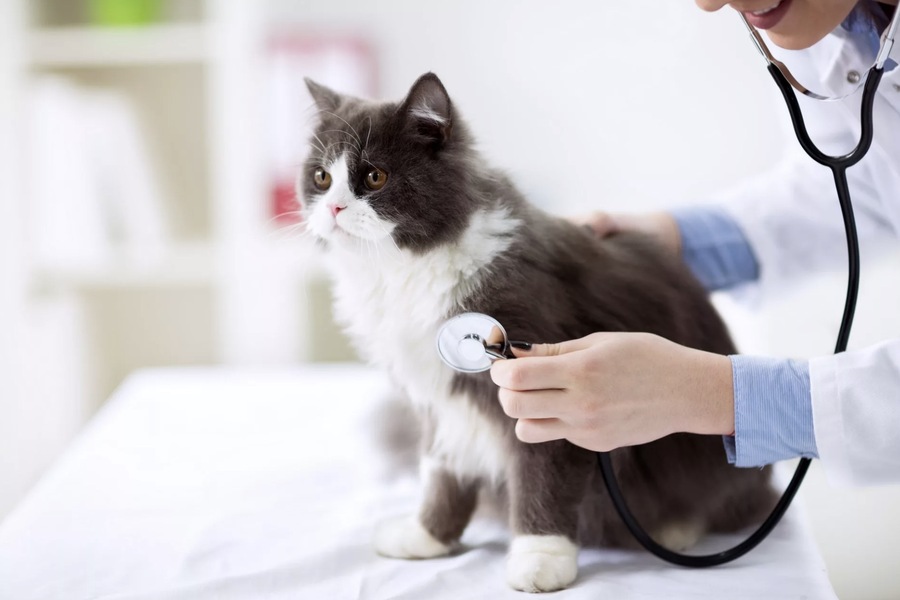Cats have long held a special place in human hearts. Their presence in our homes and lives brings not just companionship but also a sense of joy and emotional connection. The allure of cats lies in their independent yet affectionate nature, their playful antics, and their ability to offer comfort and companionship. Many people cannot imagine their lives without the presence of a feline friend. However, being a responsible cat owner involves more than just providing food and shelter; it requires a commitment to the overall health and well-being of the pet, with a particular focus on dental health by a reputable veterinary clinic.
The Importance of Dental Health in Cats
Maintaining healthy teeth and gums in cats is crucial for several reasons:
- Efficient Food Consumption: Healthy teeth enable cats to chew their food properly, ensuring they absorb all necessary nutrients effectively.
- Overall Health: Dental issues can lead to severe health problems beyond the mouth. Pathologies of the teeth and gums can be a source of chronic inflammation and pain, potentially spreading to the nasal passages, eyes, and even ears.
- Appetite and Nutrition: Oral pain can significantly affect a cat’s ability to eat, leading to weight loss and malnutrition. This, in turn, can weaken their immune system and overall health.

Common Dental Diseases in Cats
Understanding common dental diseases in cats is essential for early detection and treatment. Here are detailed definitions of some of the most prevalent conditions:
1. Gingivitis:
– Definition: Gingivitis is the inflammation of the gums caused primarily by plaque buildup. Plaque is a sticky film composed of bacteria, food particles, and saliva. When it accumulates on the teeth, it irritates the gums.
– Symptoms: Symptoms include red, swollen gums that may bleed easily, especially during brushing or eating. Bad breath is also a common indicator.
– Consequences: If left untreated, gingivitis can progress to periodontitis, a more severe form of gum disease.
– Treatment: Regular brushing, professional dental cleaning, and, in some cases, antibiotics to treat any bacterial infection.
2. Periodontitis:
– Definition: Periodontitis is an advanced stage of gum disease where the inflammation extends to the tissues and bones supporting the teeth. It usually follows untreated gingivitis.
– Symptoms: Symptoms include receding gums, loose teeth, persistent bad breath, and sometimes pus between the teeth and gums.
– Consequences: If not treated, periodontitis can lead to tooth loss and severe pain.
– Treatment: Treatment involves deep cleaning (scaling and root planing), antibiotics, and, in severe cases, surgical intervention or tooth extraction.
3. Caries (Cavities):
– Definition: Caries, or cavities, are decayed areas of the teeth caused by bacterial activity. Bacteria feed on food particles left on the teeth, producing acids that erode the enamel.
– Symptoms: Symptoms include visible holes or dark spots on teeth, sensitivity to hot and cold, and pain.
– Consequences: Untreated caries can lead to pulpitis or abscesses.
– Treatment: Treatment typically involves removing the decayed part of the tooth and filling the cavity. In advanced cases, root canal therapy or extraction may be necessary.
4. Pulpitis:
– Definition: Pulpitis is the inflammation of the dental pulp, which is the innermost part of the tooth containing nerves and blood vessels.
– Symptoms: Symptoms include severe tooth pain, especially when eating or touching the affected tooth, and swelling.
– Consequences: If untreated, pulpitis can lead to abscesses or the death of the tooth.
– Treatment: Root canal therapy to remove the infected pulp or extraction of the affected tooth.
5. Odontogenic Osteomyelitis:
– Definition: Odontogenic osteomyelitis is an infection of the bone supporting the teeth, usually caused by severe dental infections that have spread.
– Symptoms: Symptoms include swelling, pain, and pus discharge from the affected area.
– Consequences: This condition can lead to bone destruction and spread of the infection to other parts of the body.
– Treatment: Treatment involves antibiotics to clear the infection, removal of the affected tooth, and sometimes surgical intervention to clean the infected bone.
6. Stomatitis:
– Definition: Stomatitis is the inflammation of the mouth lining, which can be caused by various factors, including infections, allergies, and autoimmune diseases.
– Symptoms: Symptoms include redness, ulcers, excessive drooling, and difficulty eating.
– Consequences: Stomatitis can cause significant pain and affect a cat’s ability to eat and drink.
– Treatment: Treatment may involve anti-inflammatory medications, antibiotics, pain relief, and in severe cases, extraction of affected teeth.
7. Resorption (Destruction) of Teeth:
– Definition: Tooth resorption is a condition where the tooth structure is gradually broken down and absorbed by the body. It often starts at the gum line.
– Symptoms: Symptoms include pain, difficulty eating, and visible lesions or holes in the teeth.
– Consequences: This condition can lead to tooth loss and severe pain if left untreated.
– Treatment: Treatment usually involves the extraction of the affected teeth to relieve pain and prevent further issues.

Preventing Dental Diseases in Cats
Prevention is always better than cure. Here are some tips to help maintain your cat’s dental health:
- Regular Oral Examinations: Regularly check your cat’s mouth for any signs of dental issues, such as redness, swelling, or bad breath. Early detection can prevent more serious problems.
- Remove Food Debris: Ensure no food particles are stuck in your cat’s teeth to prevent plaque buildup. Use dental chews or toys designed to clean teeth.
- Balanced Diet: Feed your cat a balanced diet rich in nutrients. If you use dry food, include special dental formulas to help prevent dental diseases.
- Routine Veterinary Visits: Take your cat to the vet at least twice a year for a dental checkup and professional cleaning. Regular veterinary visits can help catch any dental issues early.
- Home Dental Care: Brush your cat’s teeth weekly using a brush with soft bristles or a special attachment. Gradually get your cat used to the process by first examining their mouth, then touching their teeth with your fingers, and finally letting them chew on a brush with cat-friendly toothpaste.
Professional Dental Care
While home dental care is crucial, it does not provide a 100% guarantee against dental diseases. Persistent plaque, tartar, and other oral health problems require professional attention. Therefore, it is essential to seek veterinary help for professional teeth cleaning and treatment when necessary.
- Plaque and Tartar Removal: Professional cleaning involves scaling to remove plaque and tartar buildup that cannot be addressed with home care alone.
- Dental Examinations: During professional cleanings, veterinarians can thoroughly examine the mouth and identify any issues that may not be visible to the untrained eye.
- Advanced Treatments: For severe dental issues, veterinarians can provide advanced treatments such as extractions, root canals, and treatments for infections or abscesses.
Conclusion
Cats are more than just pets; they are companions that bring immense joy and comfort to our lives. Ensuring their dental health is a critical part of being a responsible pet owner. By maintaining regular dental care routines, both at home and with professional help, you can keep your feline friend healthy, happy, and free from dental pain. A proactive approach to dental health will not only improve your cat’s quality of life but also strengthen the bond you share. Remember, a healthy mouth is a gateway to a healthy cat.

I am a Junior Web Developer for Oswald Technologies. I am an accomplished coder and programmer, and I enjoy using my skills to contribute to the exciting technological advances that happen every day at Oswald Tech.
